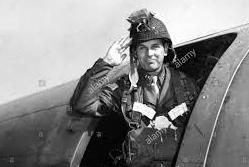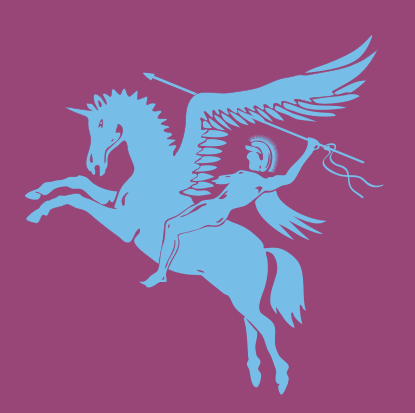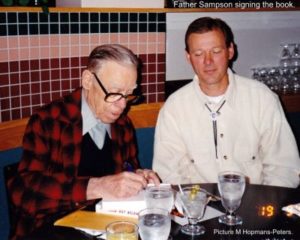The 101st Airborne Division. 506th Band of Brothers, liberators of my hometown Eindhoven.

The 101st Airborne Division (“Screaming Eagles”) 

 is a modular light infantry division of the United states Army trained for air assault operations. During World War II it was renowned for its role in Operation Overlord (the D-Day landings and airborne landings on June 6, 1944, in Normandy, France), Operation Market Garden under General Maxwell Taylor
is a modular light infantry division of the United states Army trained for air assault operations. During World War II it was renowned for its role in Operation Overlord (the D-Day landings and airborne landings on June 6, 1944, in Normandy, France), Operation Market Garden under General Maxwell Taylor


 the liberation of the Netherlands and, perhaps most famously, its action during the Battle of the Bulge around the city of Bastogne, Belgium. During the Vietnam War, the 101st Airborne Division fought in several major campaigns and battles including the fight for Hamburger Hill in May 1969.
the liberation of the Netherlands and, perhaps most famously, its action during the Battle of the Bulge around the city of Bastogne, Belgium. During the Vietnam War, the 101st Airborne Division fought in several major campaigns and battles including the fight for Hamburger Hill in May 1969.
In mid-1968 it was reorganized and redesignated as an air mobile division, then in 1974 as an air assault division. These titles reflect the division’s shift from airplanes as the primary method of delivering troops into combat, to the use of helicopters. The division is one of the most highly decorated units in the United States Army and has been featured prominently in military fiction.
On 17 September 1944, the division became part of the XVIII Airborne Corps  under Major General Matthew Bunker Ridgway
under Major General Matthew Bunker Ridgway  in the First Allied Airborne Army
in the First Allied Airborne Army  . The division took part in Operation Market Garden (17–25 September 1944), an unsuccessful Allied military operation under Field Marshal Bernard Montgomery
. The division took part in Operation Market Garden (17–25 September 1944), an unsuccessful Allied military operation under Field Marshal Bernard Montgomery 
 to capture Dutch bridges over the Rhine fought in the Netherlands and the largest airborne operation of all time.
to capture Dutch bridges over the Rhine fought in the Netherlands and the largest airborne operation of all time.
The plan, as outlined by Field Marshal Bernard Montgomery, required the seizure by airborne forces of several bridges on the Highway 69 across the Maas (Meuse River) and two arms of the Rhine (the Waal and the Lower Rhine), as well as several smaller canals and tributaries. Crossing these bridges would allow British armoured units to outflank the Siegfried Line, advance into northern Germany, and encircle the Ruhr, Germany’s industrial heartland, thus ending the war. This meant the large-scale use of Allied airborne forces, including both the 82nd  under command of Major General James “Slim Jim” Gavin
under command of Major General James “Slim Jim” Gavin  and 101st,
and 101st,  along with the British 1st Airborne Division
along with the British 1st Airborne Division  .Commandant: General-Majoor Roy E Urqhart
.Commandant: General-Majoor Roy E Urqhart  Major General Roy Elliot Urquhart
Major General Roy Elliot Urquhart  died on 13 December 1988, aged 87 years.
died on 13 December 1988, aged 87 years.
The operation was initially successful. Several bridges between my hometown Eindhoven and Nijmegen were captured by the 82nd and 101st. The 101st met little resistance and captured most of their initial objectives by the end of 17 September. However, the demolition of the division’s primary objective, a bridge over the Wilhelmina Canal at Son  , delayed the capture of the main road bridge over the Maas until 20 September. Faced with the loss of the bridge at Son, the 101st unsuccessfully attempted to capture a similar bridge a few kilometres away at Best but found the approach blocked. Other units continued moving to the south and eventually reached the northern end of Eindhoven.
, delayed the capture of the main road bridge over the Maas until 20 September. Faced with the loss of the bridge at Son, the 101st unsuccessfully attempted to capture a similar bridge a few kilometres away at Best but found the approach blocked. Other units continued moving to the south and eventually reached the northern end of Eindhoven.


At 06:00 hours on 18 September the Irish Guards resumed the advance while facing determined resistance from German infantry and tanks. Around noon the 101st Airborne were met by the lead reconnaissance units from XXX Corps. At 16:00 radio contact alerted the main force that the Son bridge had been destroyed and requested that a replacement Bailey bridge be brought forward. By nightfall the Guards Armoured Division had established itself in the Eindhoven area however transport columns were jammed in the packed streets of the town and were subjected to German aerial bombardment during the night. XXX Corps XXX Corps  engineers, under command of Lieutenant General Sir Brian Gwynne Horrocks,
engineers, under command of Lieutenant General Sir Brian Gwynne Horrocks,  supported by German prisoners of war, constructed a class 40 Bailey bridge within 10 hours across the Wilhelmina Canal. Sir Horrocks died age 89, on 04-01-1985 in Chichester. The longest sector of the highway secured by the 101st Airborne Division later became known as “Hell’s Highway”. Two days after the liberation the Germans bombed my hometown of Eindhoven and about 250 people died. My parents had left their house and fifteen minutes later the house received a direct hit.
supported by German prisoners of war, constructed a class 40 Bailey bridge within 10 hours across the Wilhelmina Canal. Sir Horrocks died age 89, on 04-01-1985 in Chichester. The longest sector of the highway secured by the 101st Airborne Division later became known as “Hell’s Highway”. Two days after the liberation the Germans bombed my hometown of Eindhoven and about 250 people died. My parents had left their house and fifteen minutes later the house received a direct hit.

 (see About). In our street 44 people, with 22 children lost their life and the 101 airborne veterans who visited us
(see About). In our street 44 people, with 22 children lost their life and the 101 airborne veterans who visited us  many times, will never be forgotten.
many times, will never be forgotten. 
See Father Francis Leon Sampson “Jumping Padre”)  and Sergeant Louis Merlano
and Sergeant Louis Merlano

 who talked to Eisenhower before D-Day.
who talked to Eisenhower before D-Day.














Leave a Reply